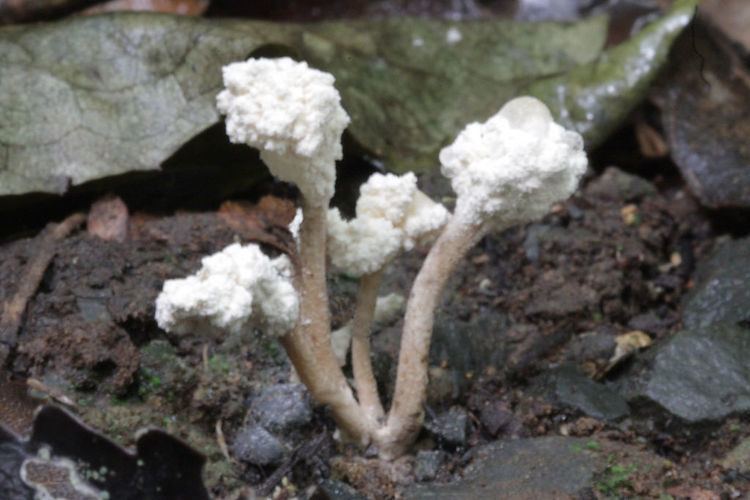Kingdom Fungi Family Clavicipitaceae Scientific name Isaria sinclairii | Genus Isaria Rank Species | |
 | ||
Similar Clavicipitaceae, Tolypocladium, Paecilomyces, Ophiocordyceps, Ophiocordyceps sobolifera | ||
Isaria sinclairii is a species of entomopathogenic fungus. It produces myriocin, from which the synthetic drug fingolimod, a treatment for multiple sclerosis, was developed.
Contents
Ecology
Isaria sinclairii is a fungus which attacks insects, including cicada larvae. The larvae typically die just beneath the soil surface, and the fungus produces white tufts which grow up from the soil and release powdery white spores.
Uses
Myriocin (2-amino-3,4-dihydroxy-2-(hydroxymethyl)-14-oxoicos-6-enoic acid) is a sphingolipid derivative produced by I. sinclairii, which was shown in 1994 to have immunosuppressive properties. A synthetic derivative was developed to have greater effectiveness lower toxicity and named FTY720, or fingolimod. This is the first oral disease-modifying drug for multiple sclerosis. Species related to Isaria sinclairii, such as Yartsa gunbu Ophiocordyceps sinensis, have been used in traditional Tibetan medicine and in traditional Chinese medicine as tonics, which some refer to as an elixir of eternal youth.
Taxonomy
Isaria sinclairii is the name of the anamorph; the teleomorph is Cordyceps sinclairii, Cordycipitaceae. It was first described in 1855 by Miles Joseph Berkeley, and transferred to the genus Isaria in 1923 by Curtis Gates Lloyd.
